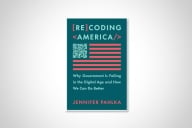You have /5 articles left.
Sign up for a free account or log in.
A respected colleague directed me to Elizabeth Austin’s piece in Washington Monthly about why racial pay gaps among STEM grads don’t occur among humanities grads.
I’m not sold on all of the explanations Austin floats, though it’s not clear from the piece whether she believes them all, either. It reads like someone thinking out loud about a complicated problem and throwing a bunch of explanations at the wall to see what sticks. I’m sympathetic to that method, having tried it myself from time to time.
For instance, I’d be curious to see if cross-tabulating race with gender changes the findings. In STEM, for example, biology majors tend to make far less money than their counterparts in, say, computer science. We know that there are higher percentages of women in biology than in computer science. We also know that there are higher percentages of women in the humanities than in, say, engineering. Does that impact salary disparities? I hate to always beat the drum of “disaggregate your data,” but sometimes asking the next question can reveal something important.
The study in question was done entirely at the University of Texas, so it effectively controlled for the prestige of the institution. If a similar study were to be done nationally, I’d absolutely want to see some version of that included as a variable.
Still, I have to credit the study with asking some terrific questions. Rather than taking racial salary gaps as monolithic, it asked different questions to break them down and discovered that what looked at first like an across-the-board phenomenon really wasn’t. Getting the problem right can help get the intervention right.
This semester, for instance, we’ve seen a much larger enrollment drop among full-time students than among part-time students. The meaning isn’t obvious. Does it mean that many students who used to be full-time are switching to part-time? Or does it mean that four-year schools in the area are getting more aggressive about recruiting traditional students, leaving a larger proportion of part-time students here? Either is plausible, and it may be a combination of the two; answering the question requires more questions. From a budgetary standpoint, it’s a challenge, since part-time students can require just as much counseling, tutoring and financial aid navigation as full-time students, but with a fraction of the revenue. But if we don’t know what’s behind the shift, we may choose an intervention based on incorrect assumptions.
Wise and worldly readers, what was the best case of a follow-up question you’ve asked (or seen someone ask) of data? I suspect there’s no lack of examples.



